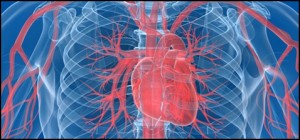Research
RESEARCH: Cardiovascular Medicine
 Cardiovascular research holds enormous promise for bringing innovative strategies to the diagnosis and treatment of cardiovascular disease. With over 100 active grants and an aggregate budget of $16 million as of June 2013, the division’s physician researchers and scientists seek a better understanding of the cellular and genetic underpinnings of cardiovascular disease, while actively participating in clinical trials to evaluate new treatment modalities.
Cardiovascular research holds enormous promise for bringing innovative strategies to the diagnosis and treatment of cardiovascular disease. With over 100 active grants and an aggregate budget of $16 million as of June 2013, the division’s physician researchers and scientists seek a better understanding of the cellular and genetic underpinnings of cardiovascular disease, while actively participating in clinical trials to evaluate new treatment modalities.
Highlight: Cardiovascular Medicine Clinical Trials
Four of the division’s faculty (Angela Taylor, Ellen Keeley, Michael Salerno, and Kenneth Bilchick) have NIH career development (“K”) awards, and another seven have NIH R01 research grants. Dr. Keeley also received an Innovative Research Grant from the American Heart Association for her study, “Fibrocytes in Hypertensive Heart Disease.” Christopher Kramer’s grant focusing on new imaging techniques for patients with peripheral arterial disease received a competitive renewal from the NIH; his NIH imaging training grant also received competitive renewal – one of only a handful of multi-modality imaging training grants in the U.S.
In the last year, Brian Annex, division chief, was tasked by the NIH with evaluating the drug Zibotentan, manufactured by AstraZeneca, to determine its effectiveness against peripheral arterial disease. UVA is one of nine academic research institutions sharing $12.7 million in NIH funding to explore new uses for existing pharmaceutical compounds, an initiative led by the NIH’s National Center for Advancing Translational Sciences.
The division’s medical research buildings are close to the UVA hospital, facilitating daily collaboration; a core group of research nurses coordinate the many ongoing clinical trials in the fields of imaging, interventional, and cardiac electrophysiology. The division’s laboratory facilities include:
- two recently renovated state-of-the-art operating rooms: one sterile, for surgery on the chronic canine model and equipped with an ultrasound machine, gamma camera and fluoroscopy unit; the other nonsterile, for acute canine experiments using ultrasound;
- a recently renovated non-sterile operating room for nuclear imaging, equipped with a two-head gamma camera;
- microscopy laboratory;
- wet laboratory for chemistry, histology, and in vitro studies.
